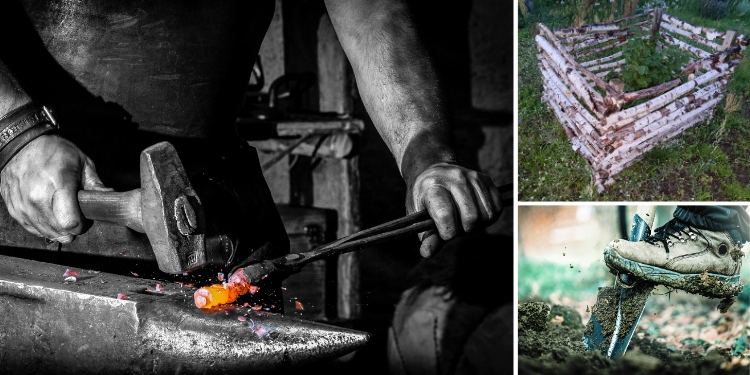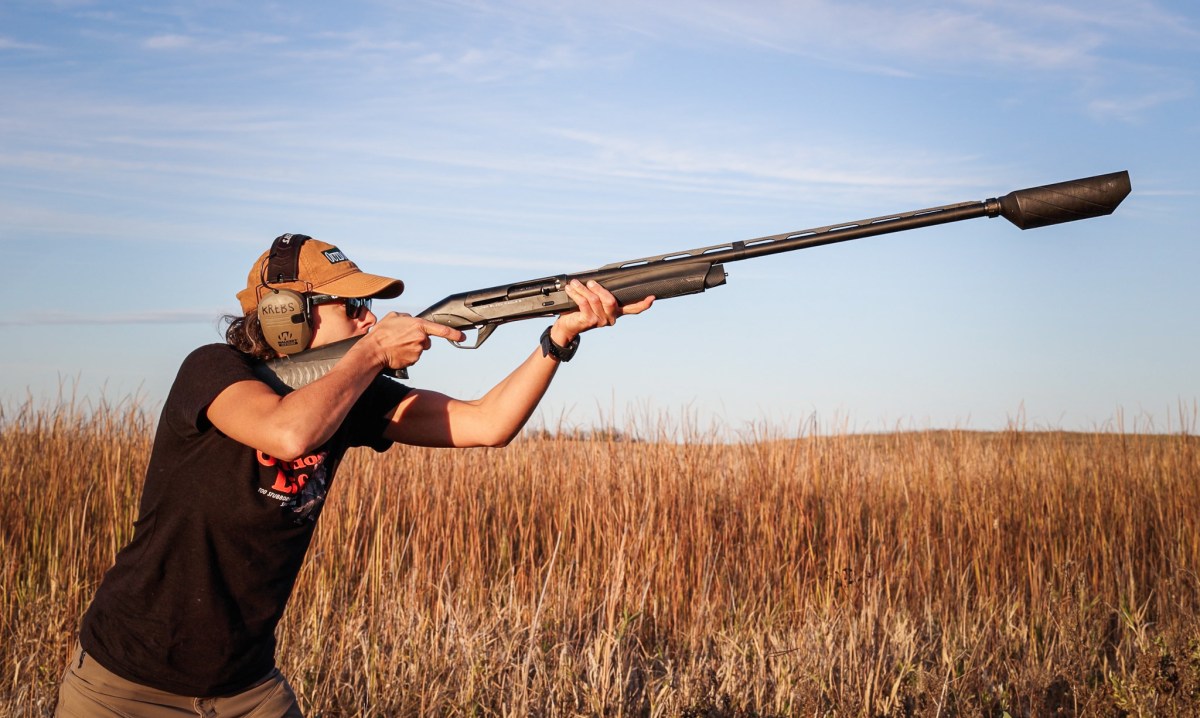Prohibition Era Secrets For Hiding Your Stockpile

Disclaimer: This article discusses techniques used historically during the Prohibition era in the United States for educational purposes. It does not condone illegal activity or alcohol consumption. The goal is to provide practical survival lessons for protecting your supplies and family in a modern, post-collapse scenario.
From 1920 to 1933, America banned alcohol and with that, sparked a nationwide cat-and-mouse game. Bootleggers, moonshiners, and ordinary folks suddenly had a reason to outsmart the government. And they did it without fancy tools or tech. Just creativity, secrecy, and a deep understanding of human nature.
Sound familiar? That’s exactly what preppers will need when the power goes out, the trucks stop rolling, and desperate people—looters, neighbors, or even the authorities—come sniffing around.
Hiding your food, ammo, medicine, or barter items won’t just be smart. It might be the only thing standing between you and hunger.
The good news? History already wrote the manual. All we have to do is adapt it.
How Bootleggers Hid Their Stash Right Under the Feds’ Noses
 Some of the smartest Prohibition-era smugglers weren’t gangsters with Tommy guns. They were quiet, unassuming people. We’re talking farmers, shopkeepers, even cops—who understood one thing: government agents follow patterns. That predictability was their greatest weakness.
Some of the smartest Prohibition-era smugglers weren’t gangsters with Tommy guns. They were quiet, unassuming people. We’re talking farmers, shopkeepers, even cops—who understood one thing: government agents follow patterns. That predictability was their greatest weakness.
Roy Olmstead, a former Seattle cop, ran liquor through underground tunnels and used coded radio messages to keep operations hidden.
George Cassiday, also known as “The Man in the Green Hat”, smuggled booze into the U.S. Capitol for over a decade using hollowed-out briefcases and fake supply carts.
(…) I took the risk and did the leg work from 1920 to 1930 (…) – George Cassiday (photo above)
In Detroit, the Purple Gang used the frozen river to haul whiskey in sleds disguised as fishing gear. Others tied barrels to the underside of docks, retrieving them only at night.
In rural areas, moonshiners dug trapdoor cellars beneath barns or disguised stills inside fake outhouses and chicken coops. And in New York, the famous 21 Club speakeasy had a wine cellar hidden behind a brick wall, opened only by a secret button.
What does all this teach teach you? Simple: don’t just hide your stockpile! Think like a smuggler. Ask yourself: “Where’s the last place anyone would look?” Then go one step further.
How They Moved It Without Getting Caught
Hiding booze was one thing. Getting it from point A to B? That required nerves of steel and serious misdirection.
Bootleggers often operated out of legal businesses.
- Soda shops
- Dry cleaners
- Churches
Deliveries were made in fake milk trucks, funeral hearses, and produce vans. Some ran bottles inside hollow loaves of bread or tucked into baby carriages. Others bribed train conductors to stash crates in luggage cars.
Why does this matter to you? Simply put, when collapse hits, barter and supply exchanges won’t be safe or open. You’ll need ways to trade discreetly, through trusted contacts, and without drawing attention. Think flea markets instead of supermarkets. Think camouflage, quiet handshakes, and routes with no cameras or nosy neighbors.
Using History to Stay Ahead in a Crisis
If there’s one thing history teaches us, it’s this: when systems break down, restrictions follow. During Prohibition, it was alcohol. But in a post-collapse world? It could be food, fuel, firearms, or even antibiotics.
Think about it! Rationing, curfews, martial law. Your private supplies could be labeled as “hoarding.” Your extra ammo or long-term food stash could be “confiscated for redistribution.”
So what do you do?
Take a page from Olmstead: use codewords and encrypted apps to stay in touch with trusted allies. Or go old-school with paper notes and dead drops. Hide your best supplies in plain sight: behind false walls, inside broken appliances, or buried in sealed tubes where no one would think to dig.
Creating Hidden Compartments in Everyday Items
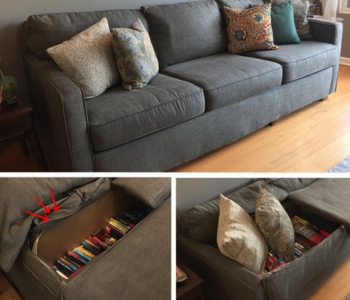 Back then, people turned ordinary furniture into clever hideouts. Hollowed-out chair legs. Secret drawers. False-bottom cabinets. These were survival tools, not Hollywood props.
Back then, people turned ordinary furniture into clever hideouts. Hollowed-out chair legs. Secret drawers. False-bottom cabinets. These were survival tools, not Hollywood props.
You can do the same today with simple tools:
- False-bottom drawer: Use a thin plywood sheet at the base of a dresser drawer. Lift it with a fingernail or knife notch. Hide seeds, cash, or ammo.
- Couch cushions: Remove some stuffing, slide in vacuum-sealed food or a handgun, then sew in a discreet zipper.
- Bookshelf panel: Add a hinged plywood back to an old shelf. Stash barter items or medicine behind it.
Once you’ve built a hiding spot, test it. Ask a friend to search the room. If they find it in under 10 minutes, it’s not good enough.
Fake Them Out With Decoy Stashes
Bootleggers were masters of misdirection. They’d plant a few bottles where the cops could find them, just enough to satisfy the search. Meanwhile, the real stash was buried or hidden in a crawlspace no one checked.
You can do the same thing!
Keep a decoy pantry with old canned goods and half-used supplies.
Leave an unlocked shed with expired beans and dusty boxes.
Bury your real cache under your chicken coop, inside a sealed PVC pipe in the woodpile, or behind a false panel in your garage wall.
Remember, the goal is to mislead.
>> The Lost Samurai Superfood is a must-have long-lasting food for your pantry
Maintaining Your Caches
Now there’s another thing. The best hiding place in the world is useless if your supplies are ruined. Rust, mold, rodents, and moisture will silently destroy everything you’ve stored.
Here’s how to stay ahead:
- Check every six months for leaks, pests, or container damage.
- Rotate food—stick to long-shelf-life items like rice, beans, or freeze-dried meals.
- Avoid canned goods for buried caches; they rust. Use Mylar bags, glass jars, or sealed plastic.
- Track everything in a coded paper journal. Use vague labels like “shed check” or “garden task.”
Set reminders, but keep them discreet. You don’t want someone seeing “cache inspection” pop up on your phone, do you?
 Experts in off-grid food storage come from the Amish community. They have over 200 years of experience identifying long-lasting foods and preserving them in optimal conditions.
Experts in off-grid food storage come from the Amish community. They have over 200 years of experience identifying long-lasting foods and preserving them in optimal conditions.
Living off the grid, the Amish don’t rely on electricity or modern technologies to secure their supplies. So how do they manage to survive—and even thrive? Because, after all, what might be a post-SHTF scenario for you is their everyday life.
That’s exactly what I thought when I decided to buy a guide written by someone raised and educated within the Amish community. Eddie Swartzentruber was born and grew up among the Amish.
In The Amish Ways Book, he reveals all the secret tricks his community uses to live very well despite lacking access to public utilities and modern technology.
➡️ Click here and get your copy now. Only a few left!
Storing Like a Smuggler: Waterproofing and Rot-Proofing
Bootleggers protected their goods with whatever they had: wax, tar, oilcloth, and waterproof barrels. You can modernize those methods:
- PVC tubes: Great for sealing small items like matches, batteries, or documents. Add silica gel packets.
- Ammo cans: Military surplus with rubber seals work well for gear or electronics. Double-bag inside for safety.
- Vacuum bins: Bury upside-down to minimize water seepage. Keep food sealed and off the ground.
Skip the tin cans! They rust underground. Go with plastic or glass for long-term burial.
Before burying anything, do a 24-hour submersion test. If it leaks, fix it before it costs you later.
Operational Security (OPSEC) for Your Stockpile
Bootleggers didn’t just hide liquor. They hid entire operations. One careless word brought the Feds to your door. Same goes for your prepping. Your stockpile should be on a need-to-know basis, and very few people need to know.
A very smart idea is to vary your routines. Don’t always visit your cache on Sundays. Change your path. Cover your tracks.
When someone asks about your plans… Well, play dumb. Offer a harmless answer. Deflect with humor or change the subject. If you slip up, assume the information is compromised and adjust your setup. In a SHTF scenario, your stockpile’s safety depends as much on your silence as your hiding spots.
There’s also the possibility that someone suspects you’re hiding supplies—or something else. You can often tell if you’re dealing with unusual curiosity when a neighbor or acquaintance starts asking you THESE 3 specific questions.
Don’t Let These Rookie Mistakes Ruin Your Prepping
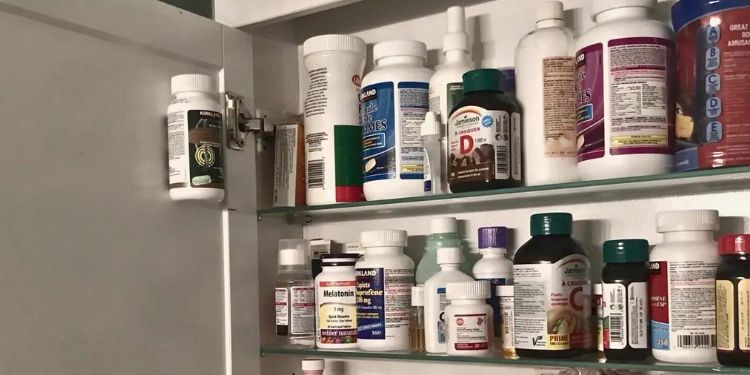 The biggest threat to your stockpile isn’t always looters! Usually, it’s your own mistakes. Labeled containers, hiding everything in one place, or bragging to neighbors can undo years of prepping in a single moment.
The biggest threat to your stockpile isn’t always looters! Usually, it’s your own mistakes. Labeled containers, hiding everything in one place, or bragging to neighbors can undo years of prepping in a single moment.
Even the best hiding spot fails if you don’t maintain it. Rust, mold, and rodents can silently destroy your supplies if left unchecked.
Avoid those. Walk your property today and ask yourself: “If I were desperate, where would I search first?” If your answer matches your hiding spot… time to move it. Build a decoy. Seal the real stuff. Stay quiet. Test everything.
The Prohibition Era and Self-Reliance
During the Prohibition era, many Americans resorted to making their own alcohol at home, a practice known as moonshining or home brewing. With commercial alcohol banned, people used simple equipment to ferment and distill spirits in secret, often risking heavy fines or imprisonment.
This wasn’t just about rebellion, but also about adapting to a system that no longer served their needs.
Homemade alcohol became a vital part of underground culture, supplying speakeasies and private gatherings despite the legal risks involved.
It reflected a deeper truth: when public systems fail, resourceful individuals find ways to survive. Communities turned inward, relying on their own tools, skills, and knowledge to meet basic needs that could no longer be fulfilled through legal or official channels.
What Can You Learn From That?
While alcohol isn’t essential for survival, there’s one resource you truly can’t live without: water! And it’s at risk of becoming conventionally unavailable.
What NASA has called “the 1000-year megadrought” is intensifying, and during summer 2025, it has reached alarming new levels. Drought, along with various incidents that can disrupt municipal water systems, could leave you without access to this vital resource.
So what can you do? Take a page from those who made it through the Prohibition era on their own. This backpack-sized water generator is an affordable and practical solution that lets you produce clean water at home. Off-grid and on your terms.
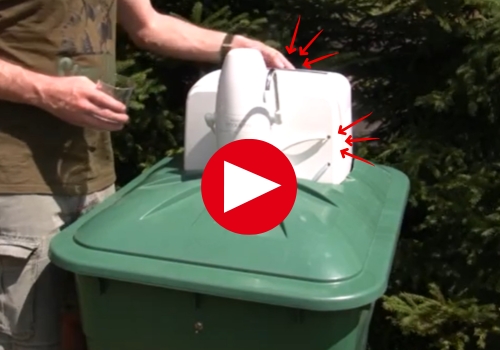
The method behind it is proven, already tested by over 40,000 Americans. Even better, it’s based on water extraction technology developed by experts from the Israeli military, one of the most advanced forces in the world.
Alternatively, you can try another system trusted by soldiers in the U.S., U.K., and Indian armed forces: The Water Freedom System. It can produce up to 60 gallons of water per day, helping to keep thousands of troops hydrated on some of the toughest battlefields in the world.
The best part? When you find yourself depending on it, you’ll realize that each day of clean water ends up costing you less than 14 cents.
Final Thoughts
The men and women who thrived during the Prohibition era didn’t just break the law. They outsmarted the system using ingenuity, secrecy, and preparation.
We don’t have to admire their vices, but we’d be foolish to ignore their tactics.
The truth is that the best stockpile is the one no one finds. Start today: walk your home, pick a spot, and build your first hiding place. Then test it. Because when desperate people come looking, the only thing they should find is nothing at all.
All the complicated times in our nation’s history teach us one thing: we must strive for self-reliance to be ready for major challenges. Want a reliable 24/7 power source in your own backyard that allows you to outlive any long-term blackout? Get it from here!
You may also like:

Yes, They Really Did This During the Great Depression
The Cheapest Way to Build an Underground Bunker for Your Stockpile (Video)
The Guns The Government Doesn’t Want You To Have
The Police and Military when SHTF – Friend or Armed Foe?
Read the full article here




